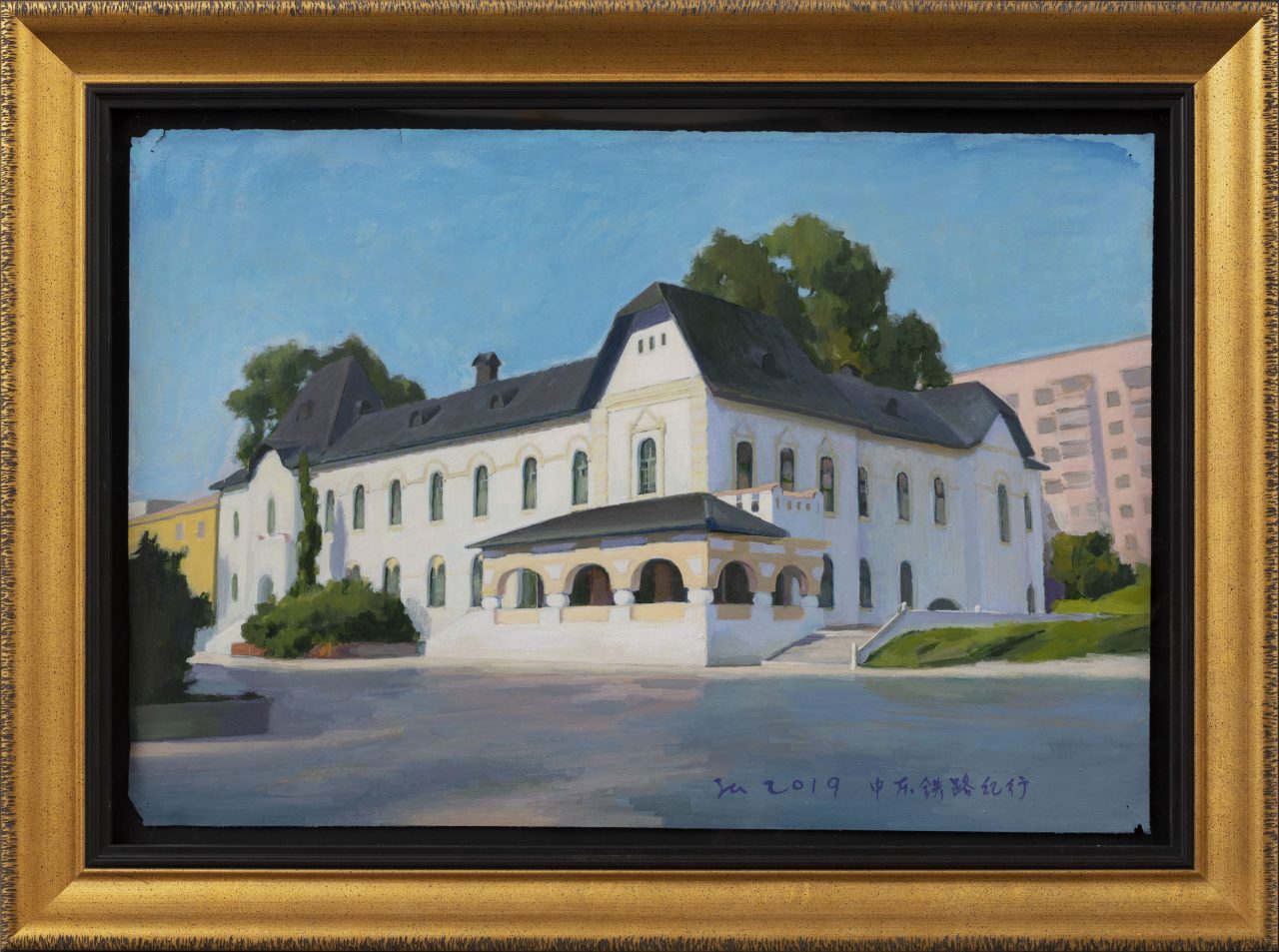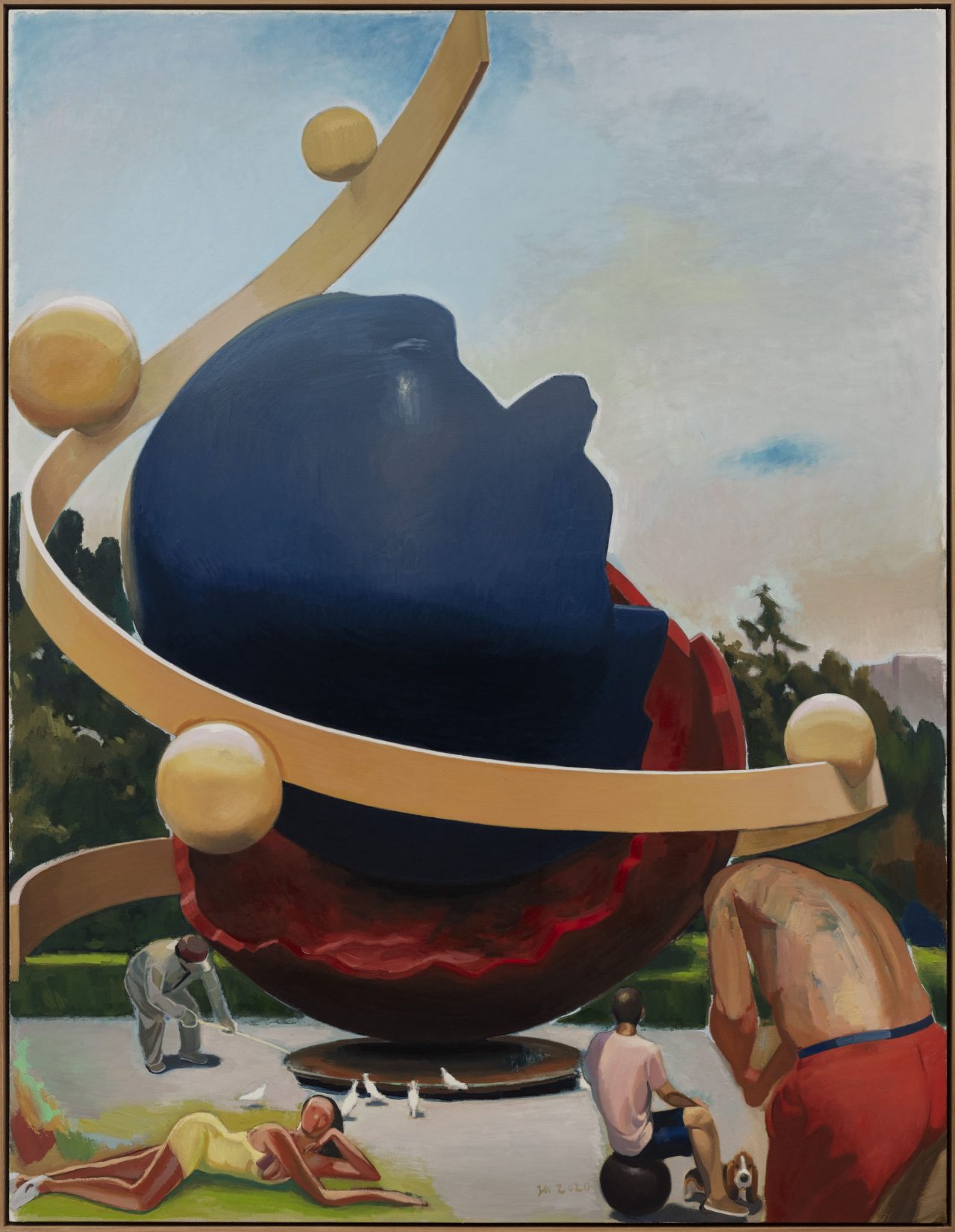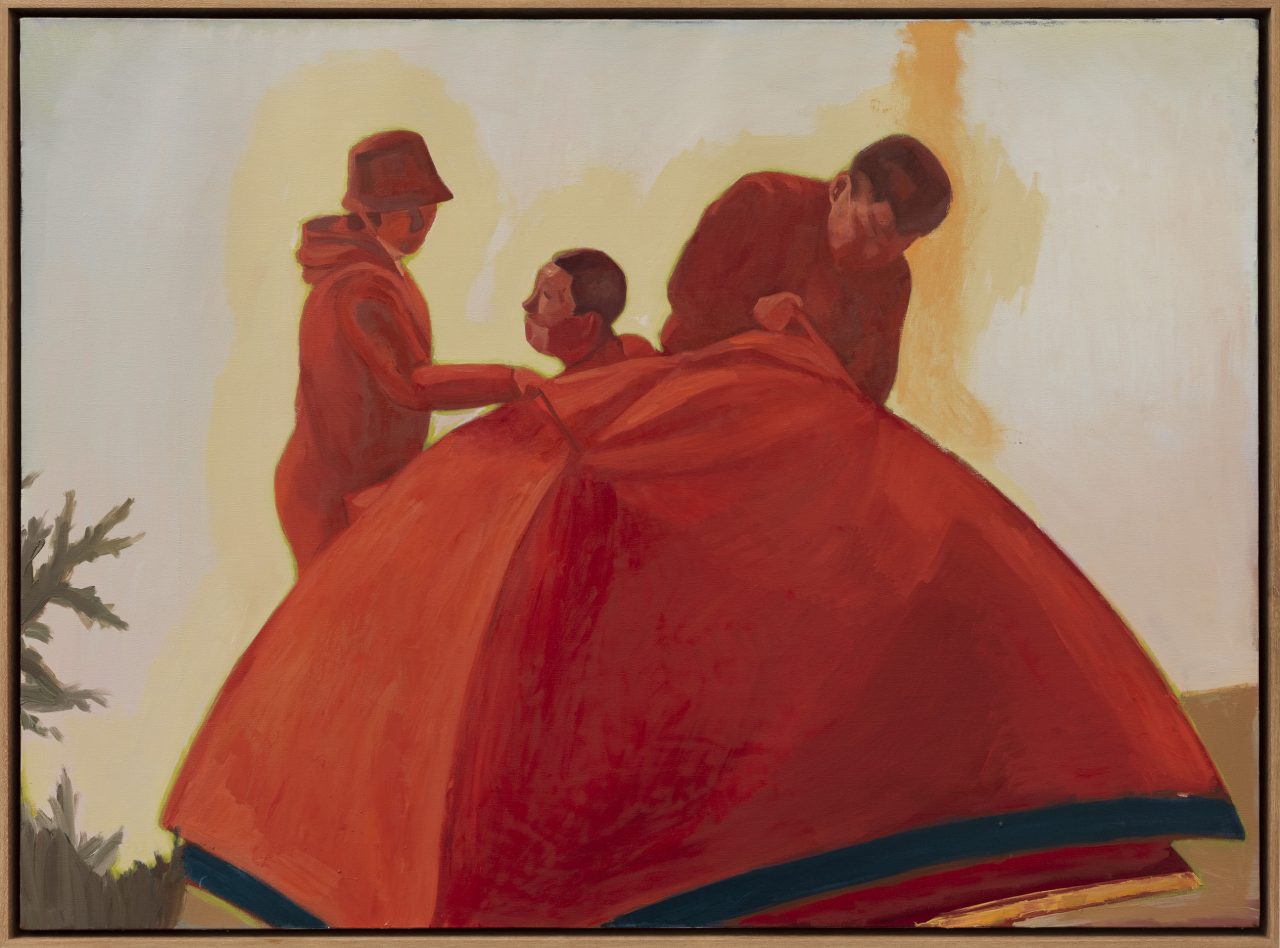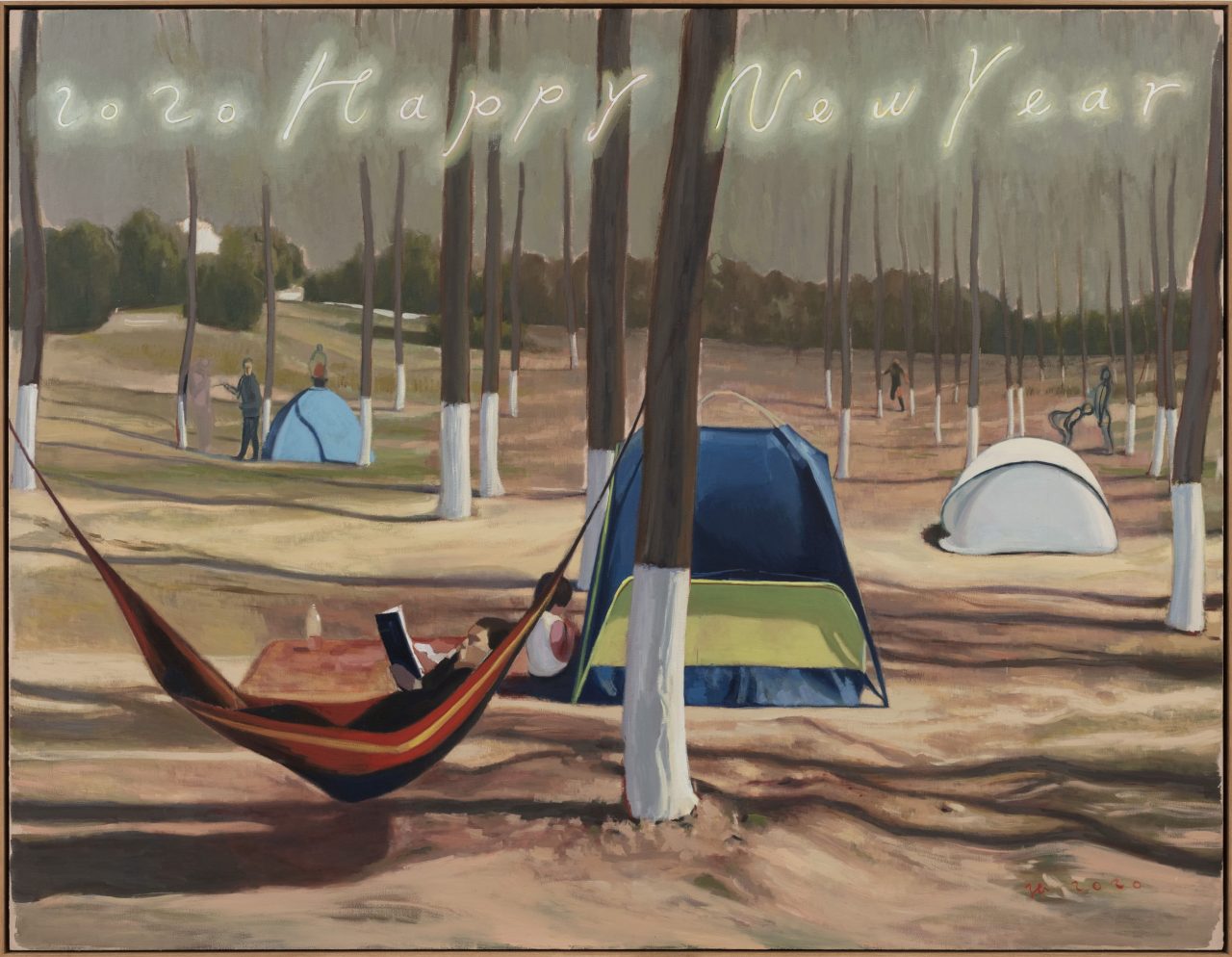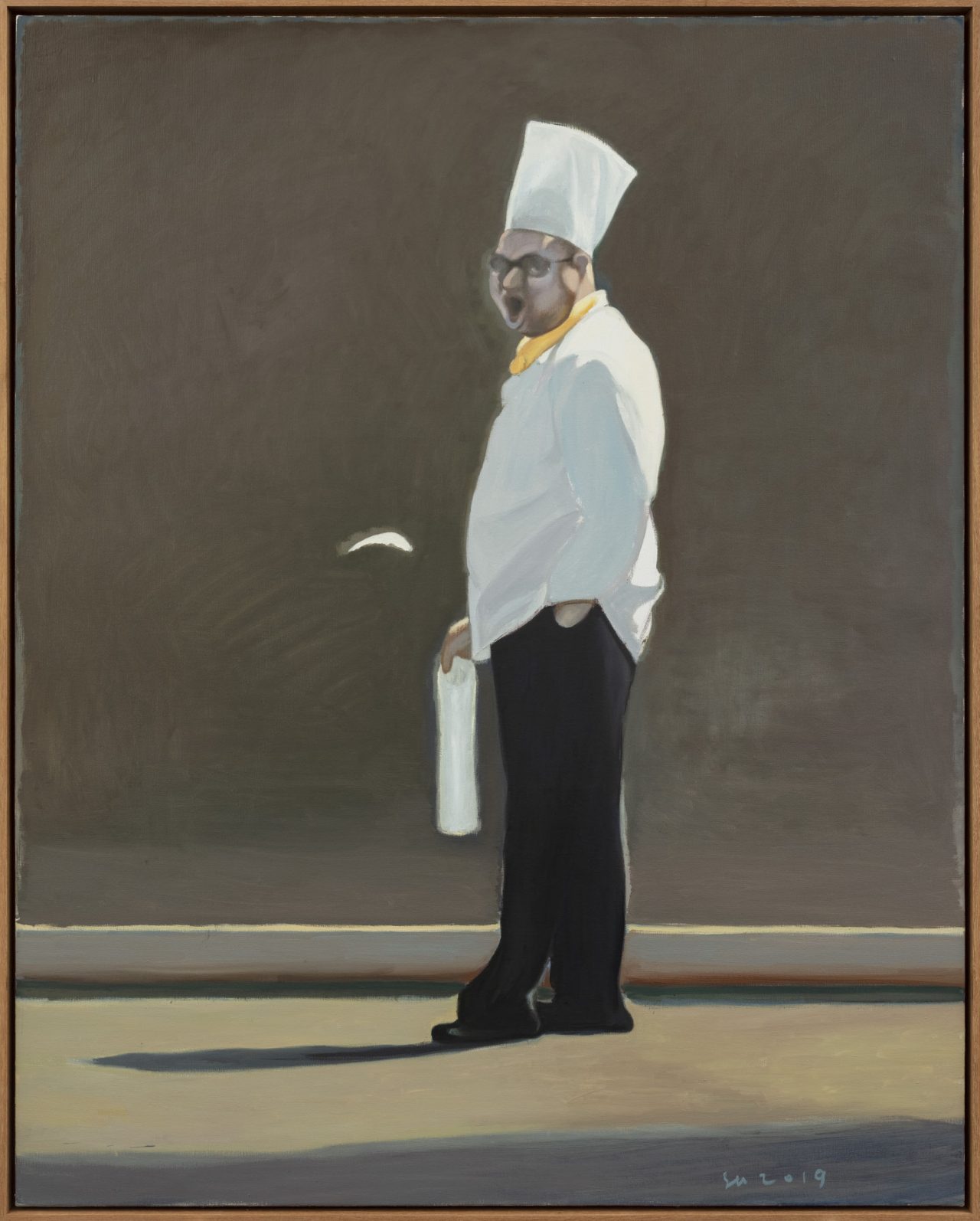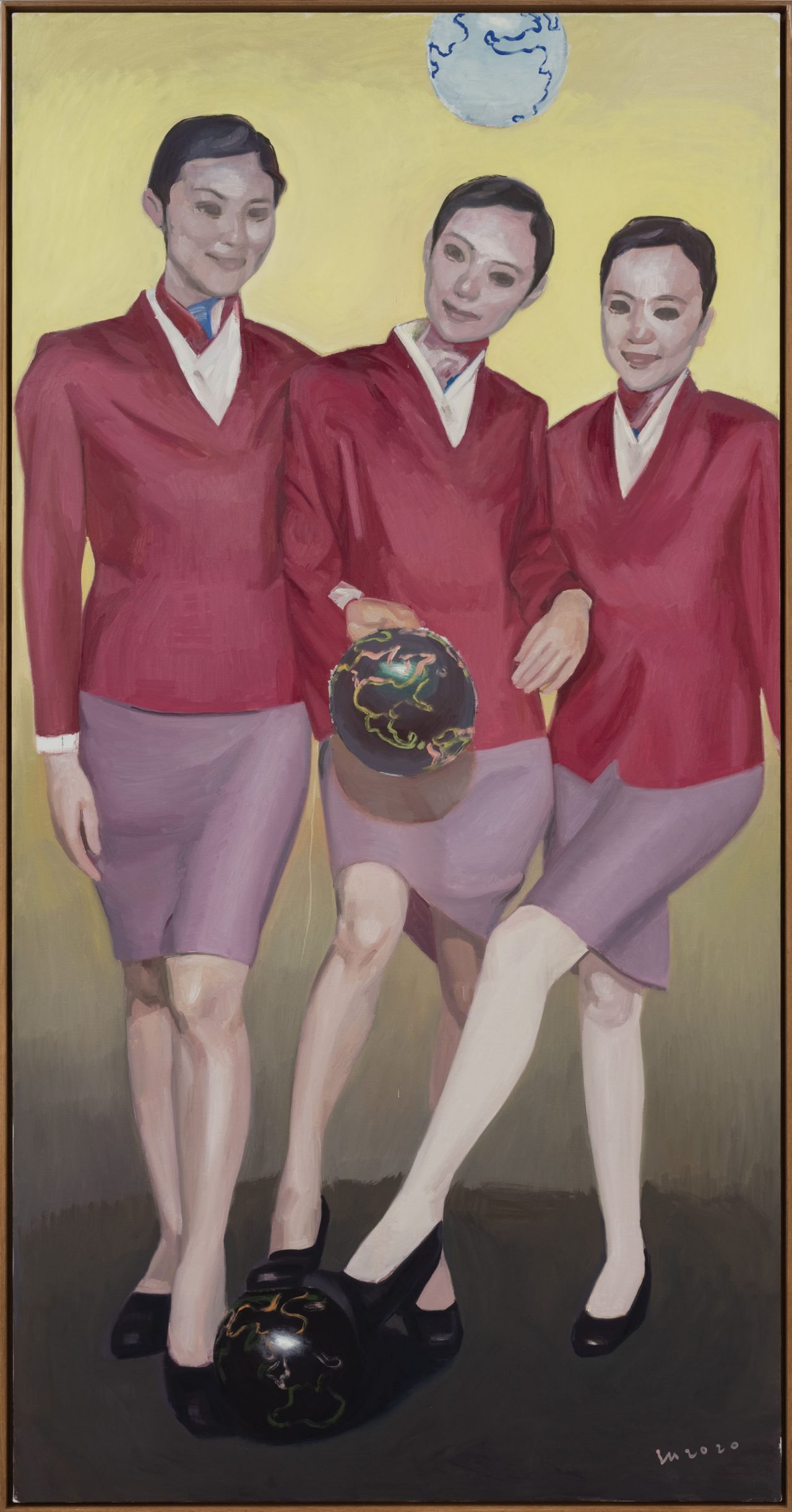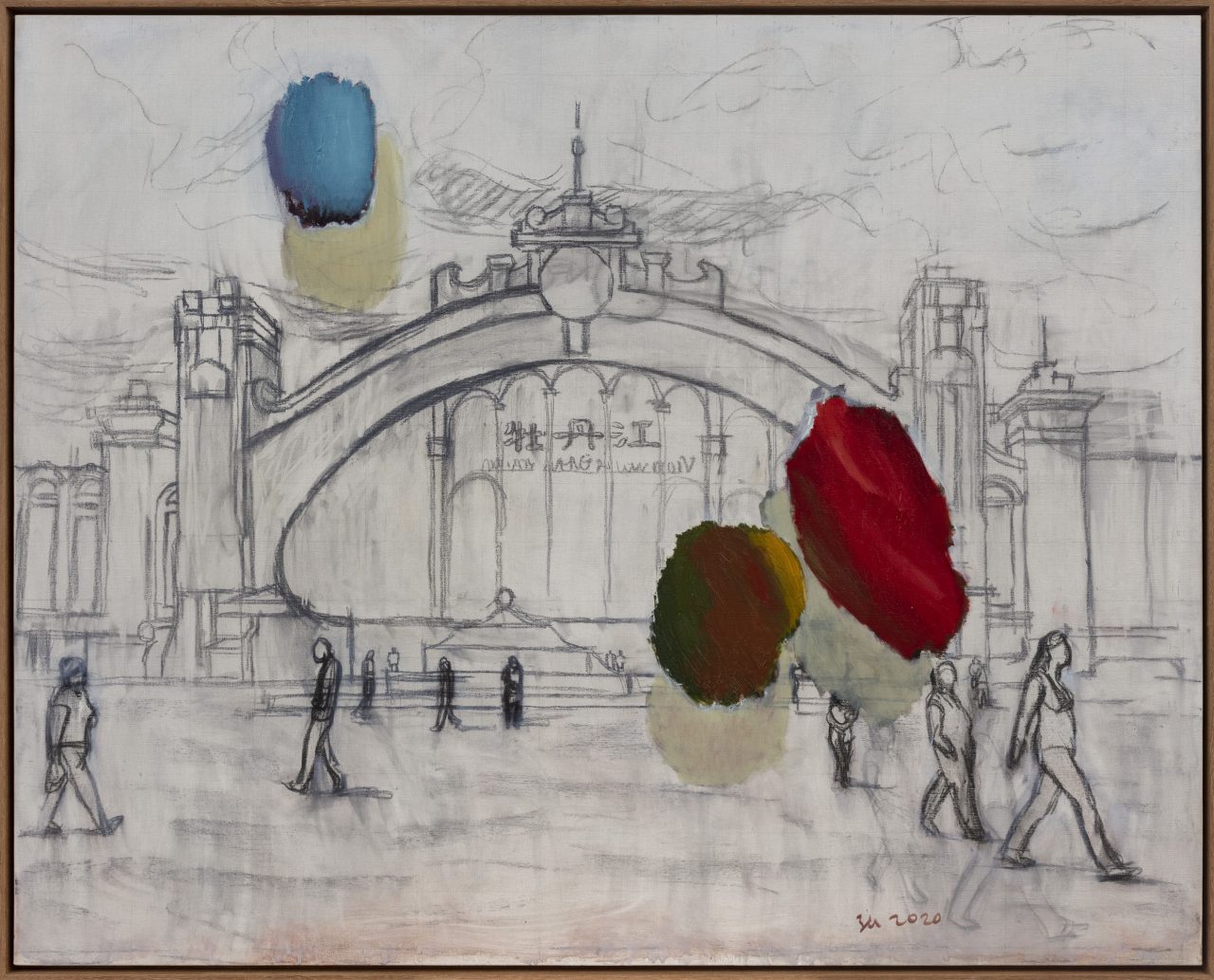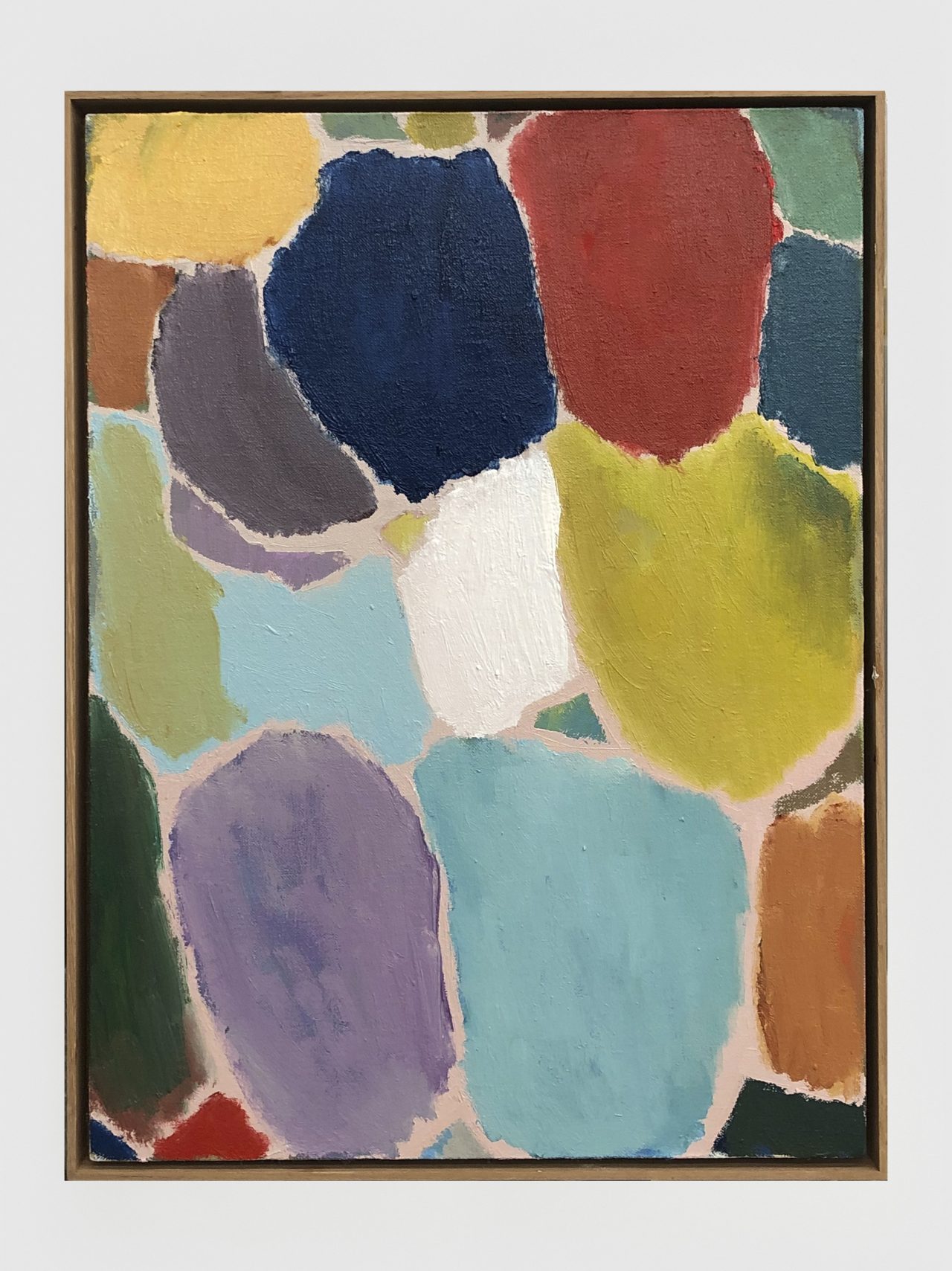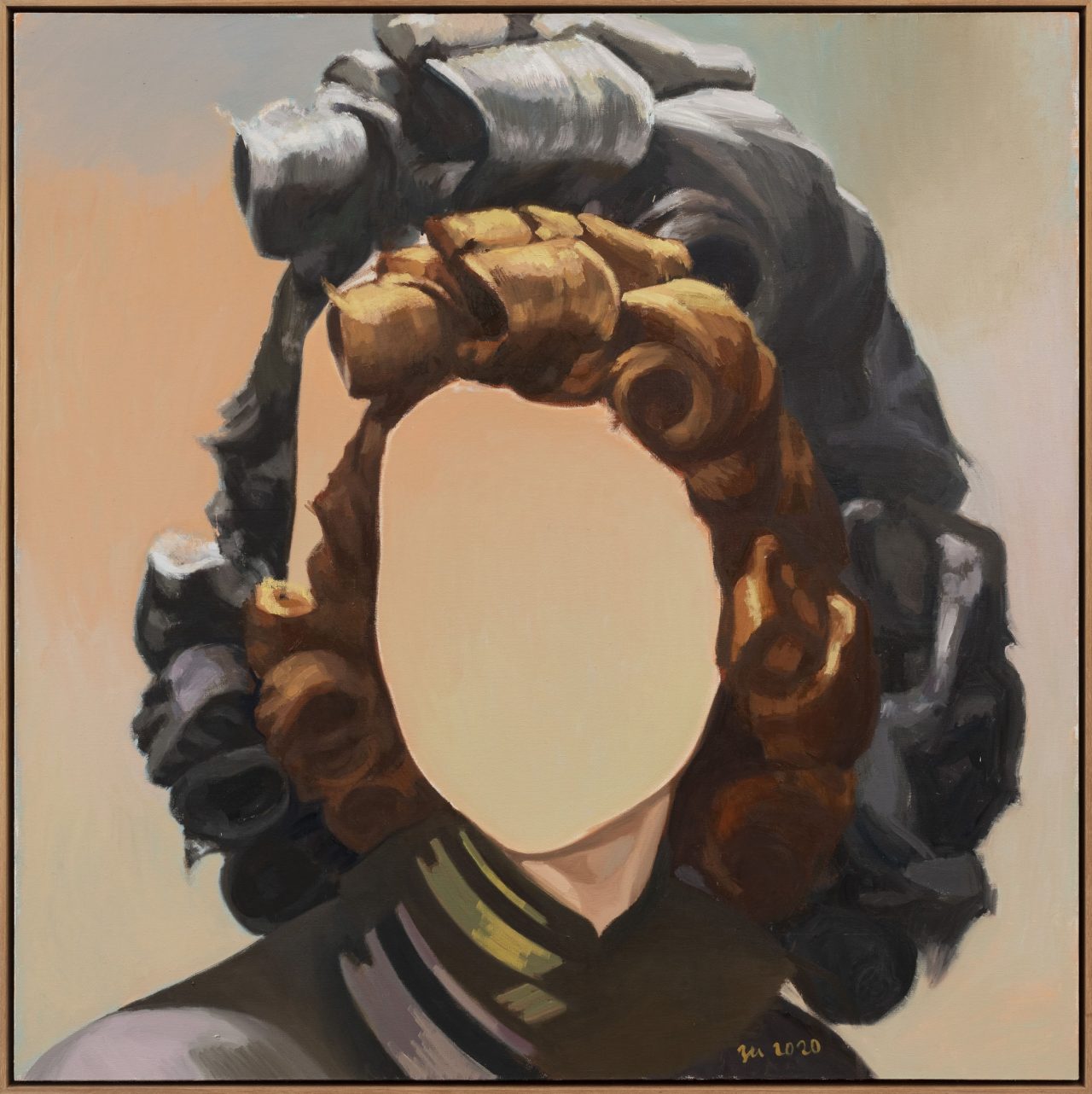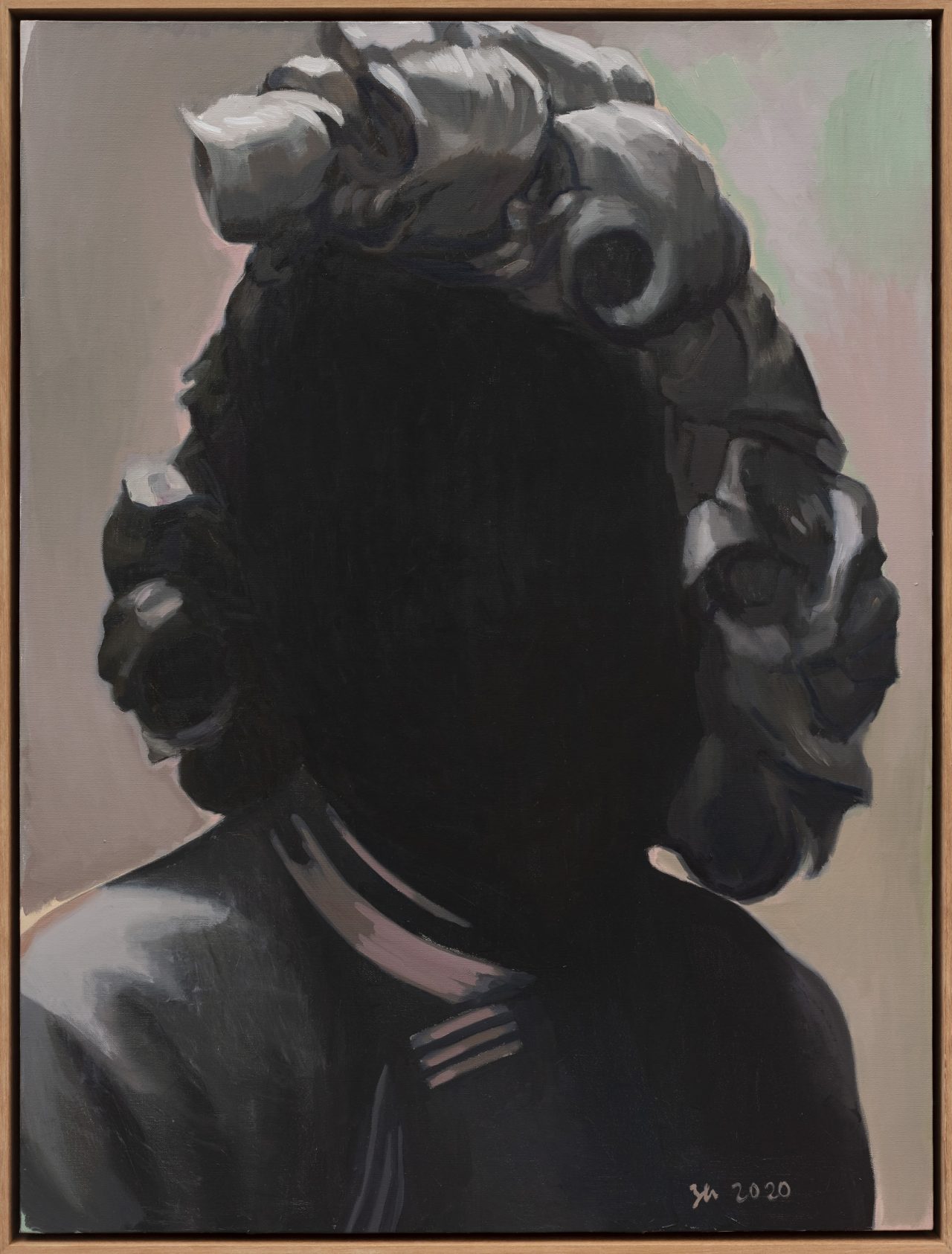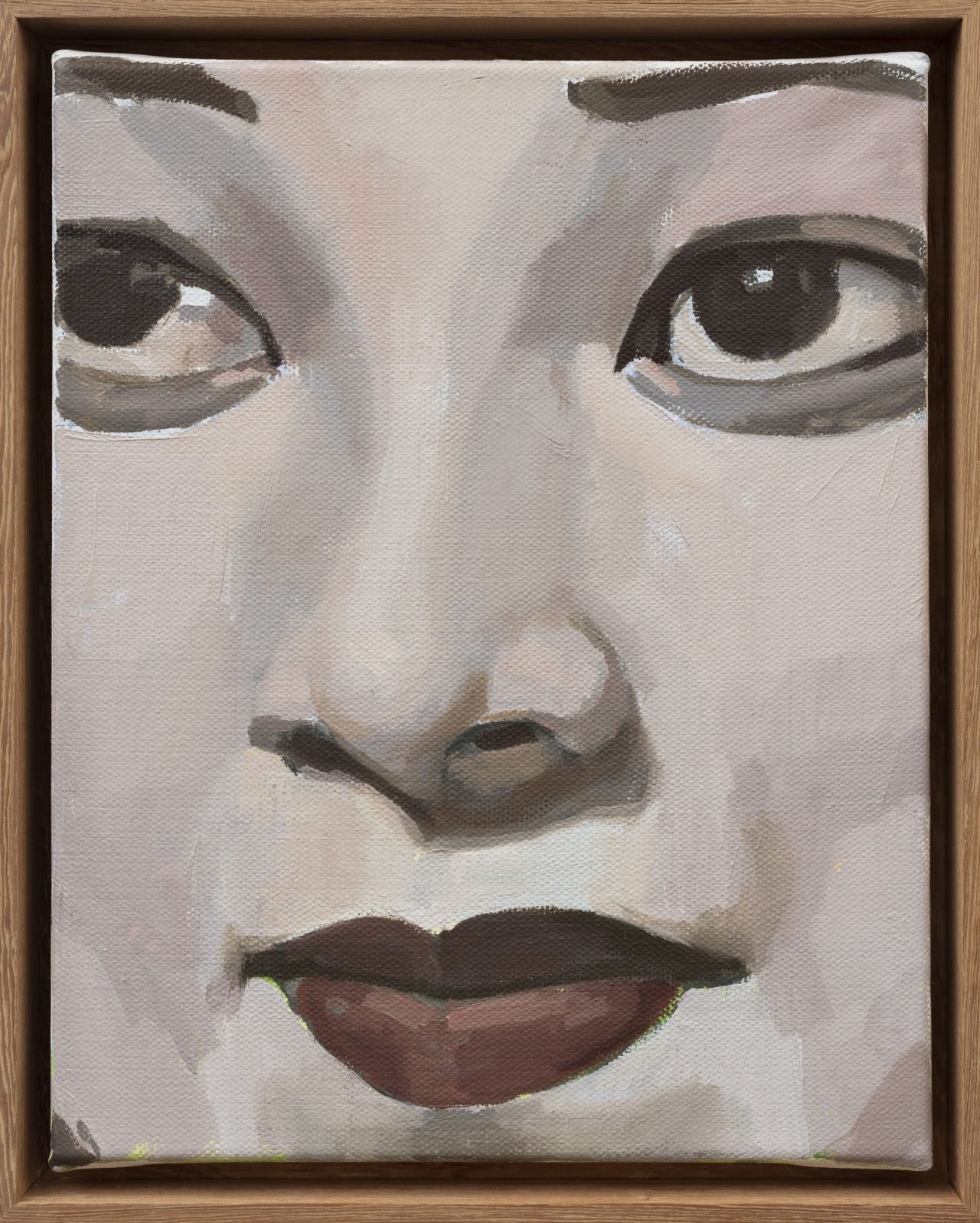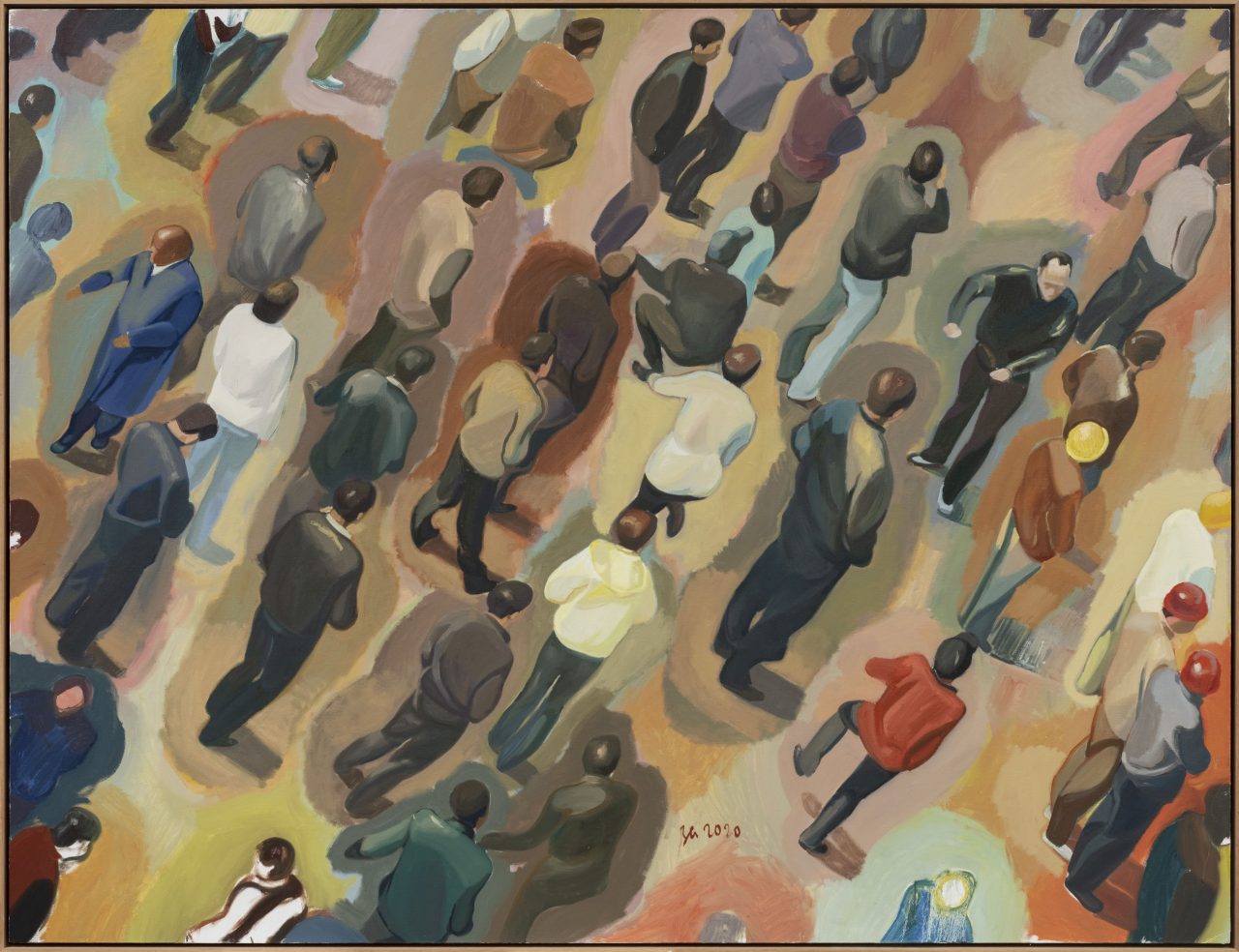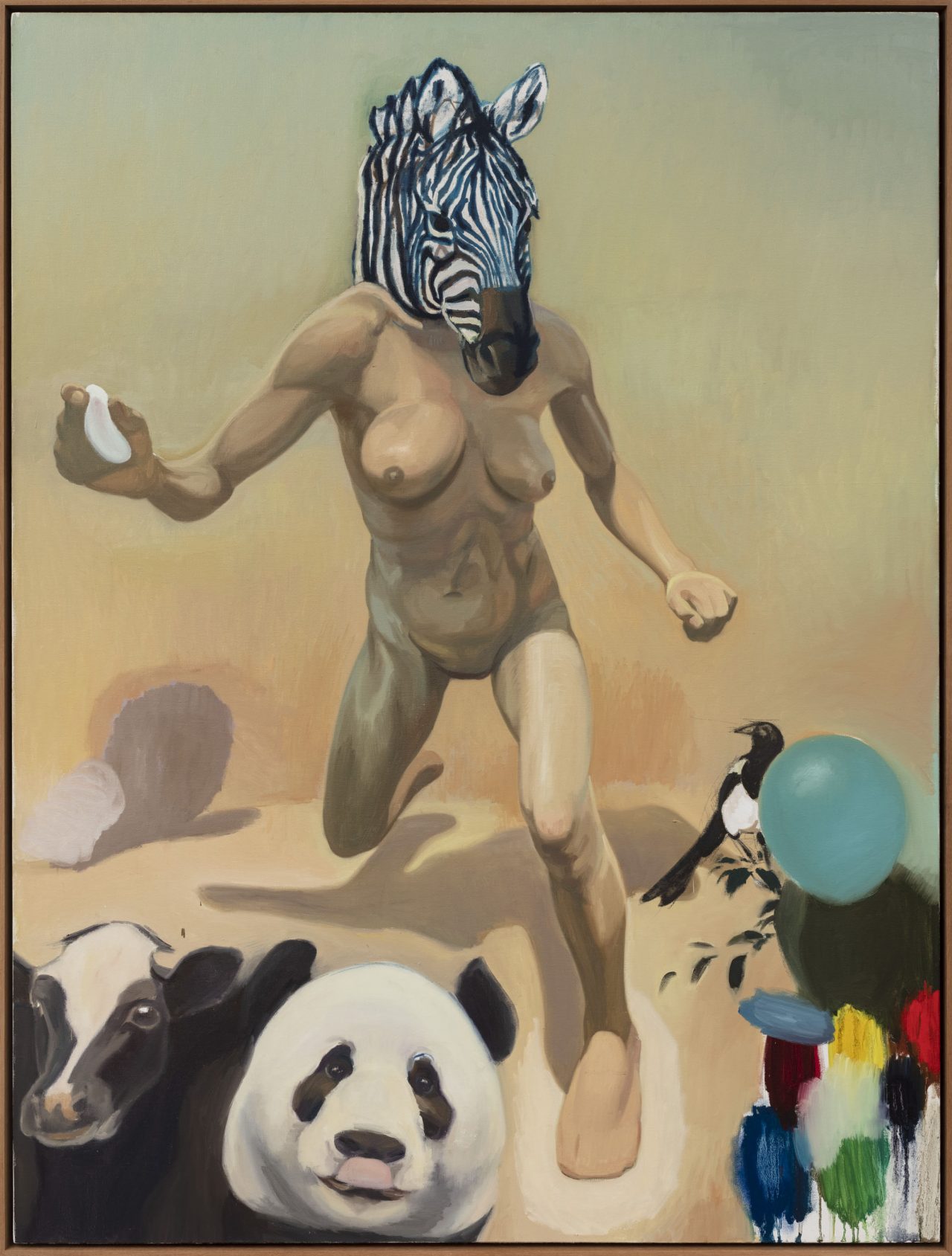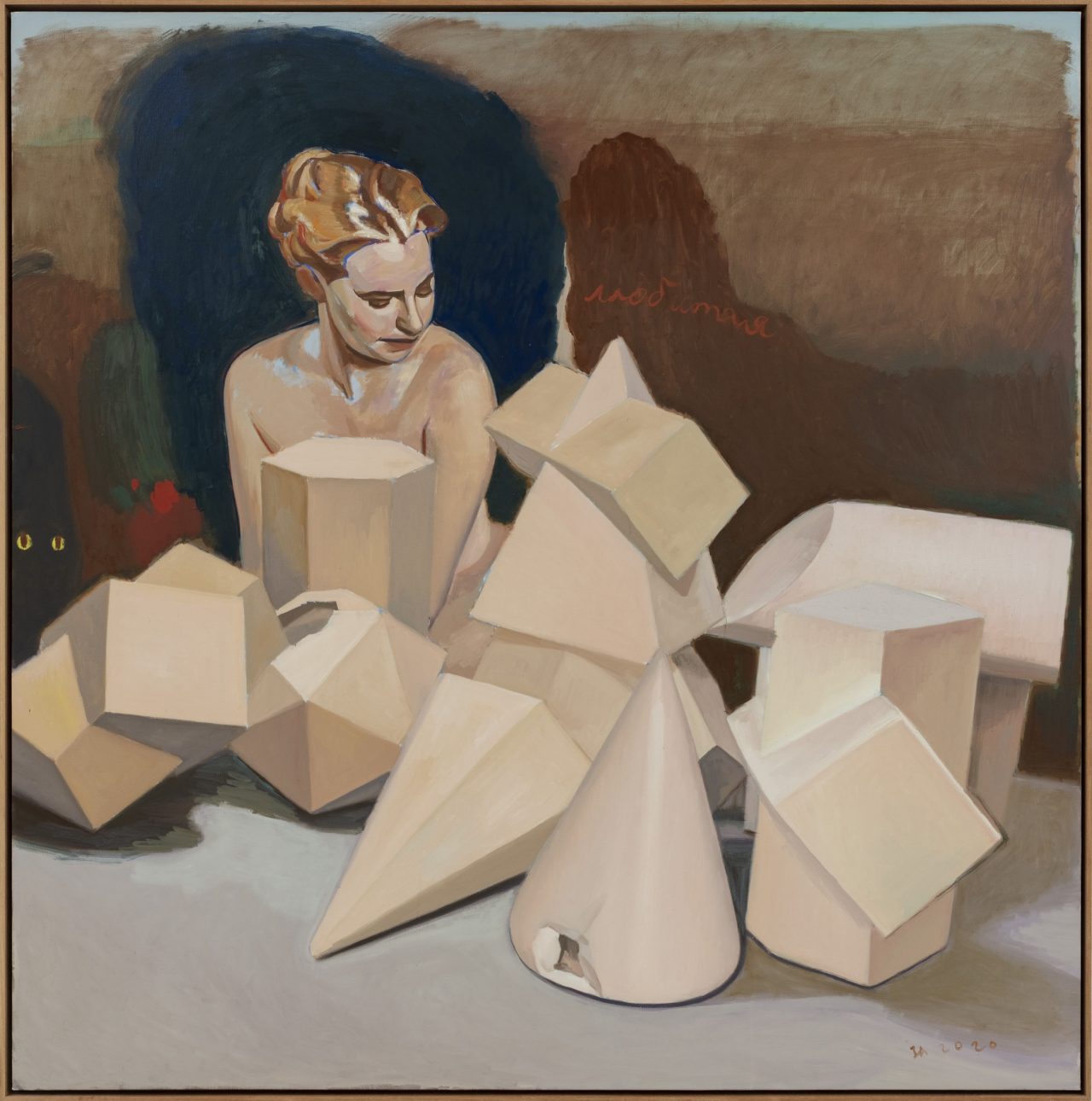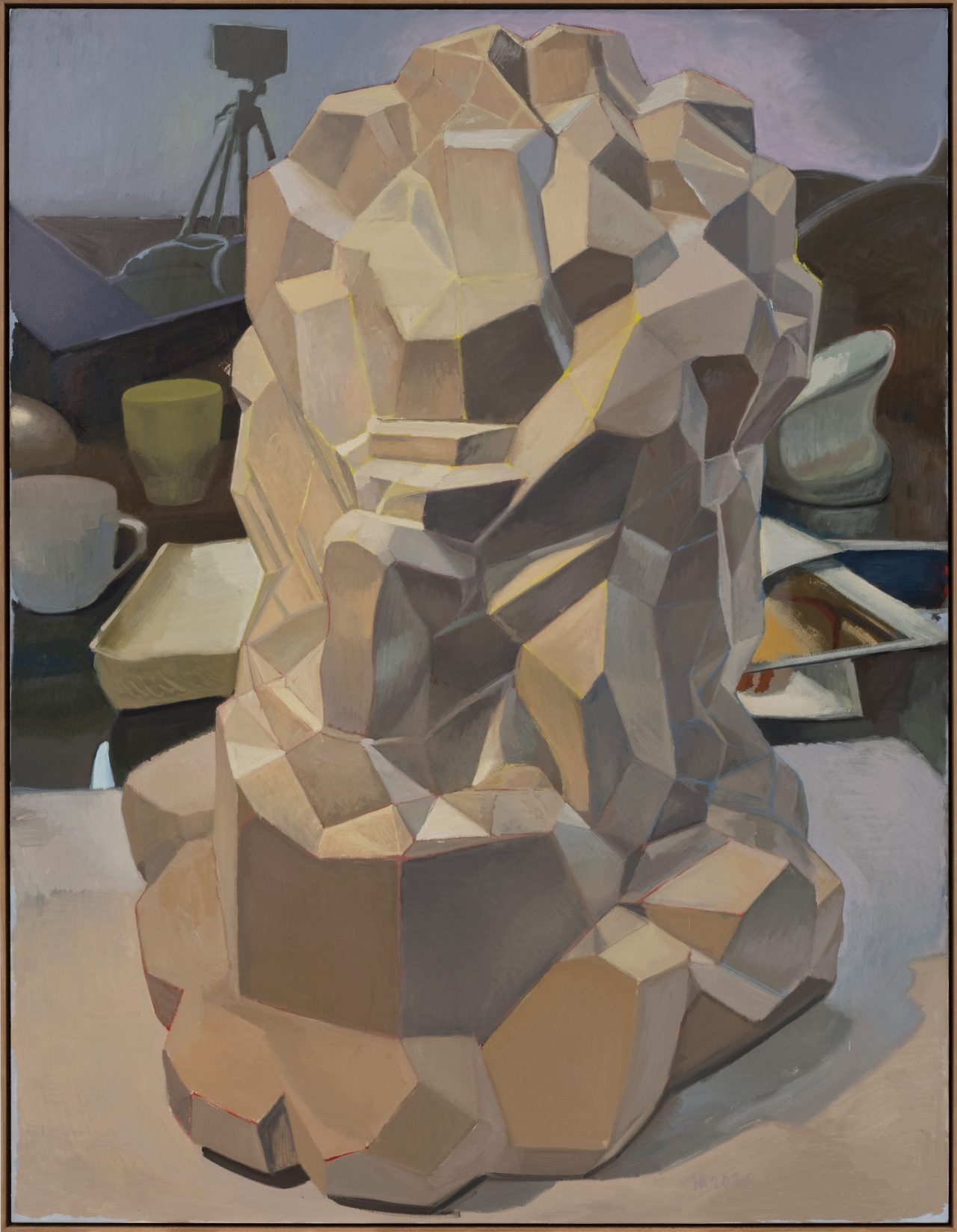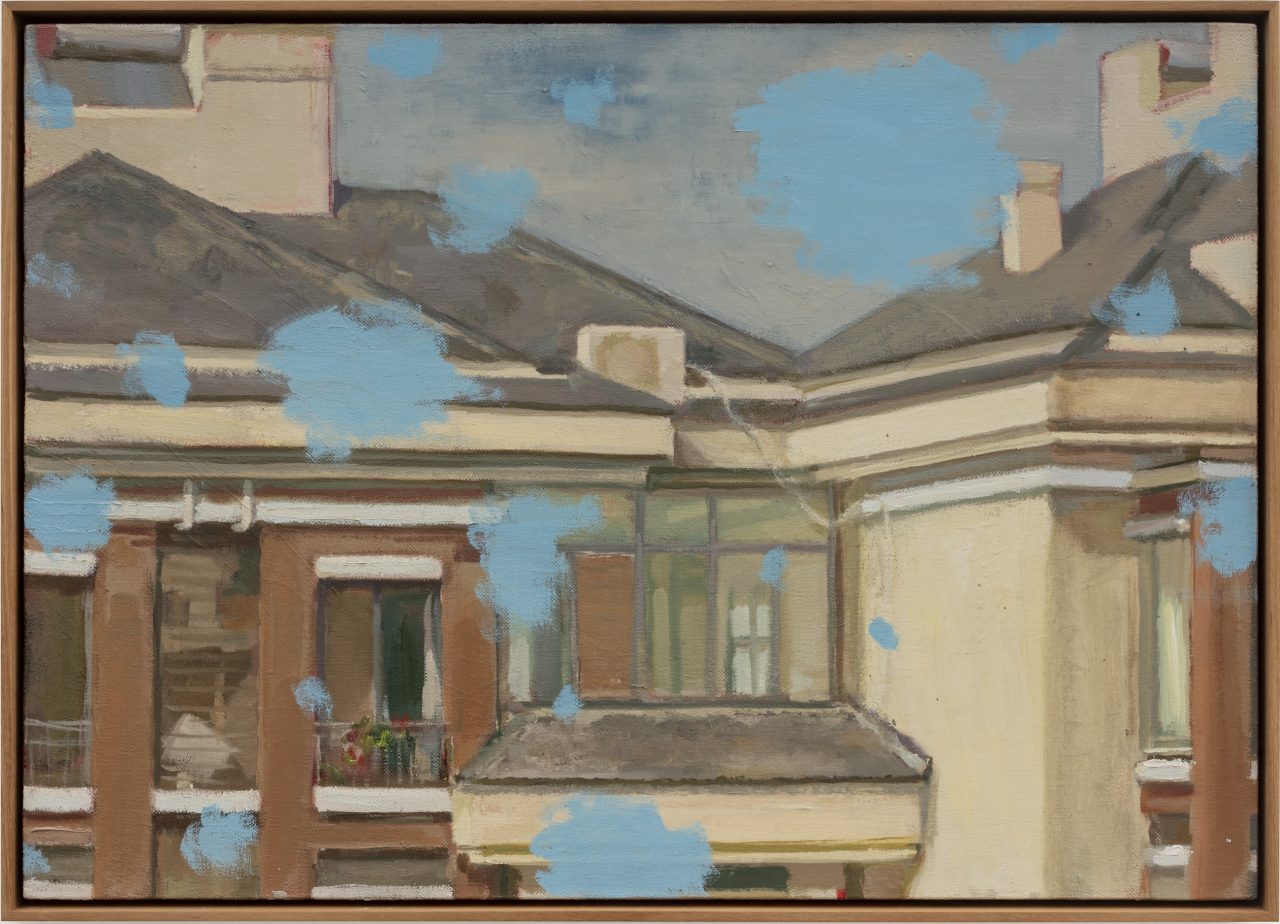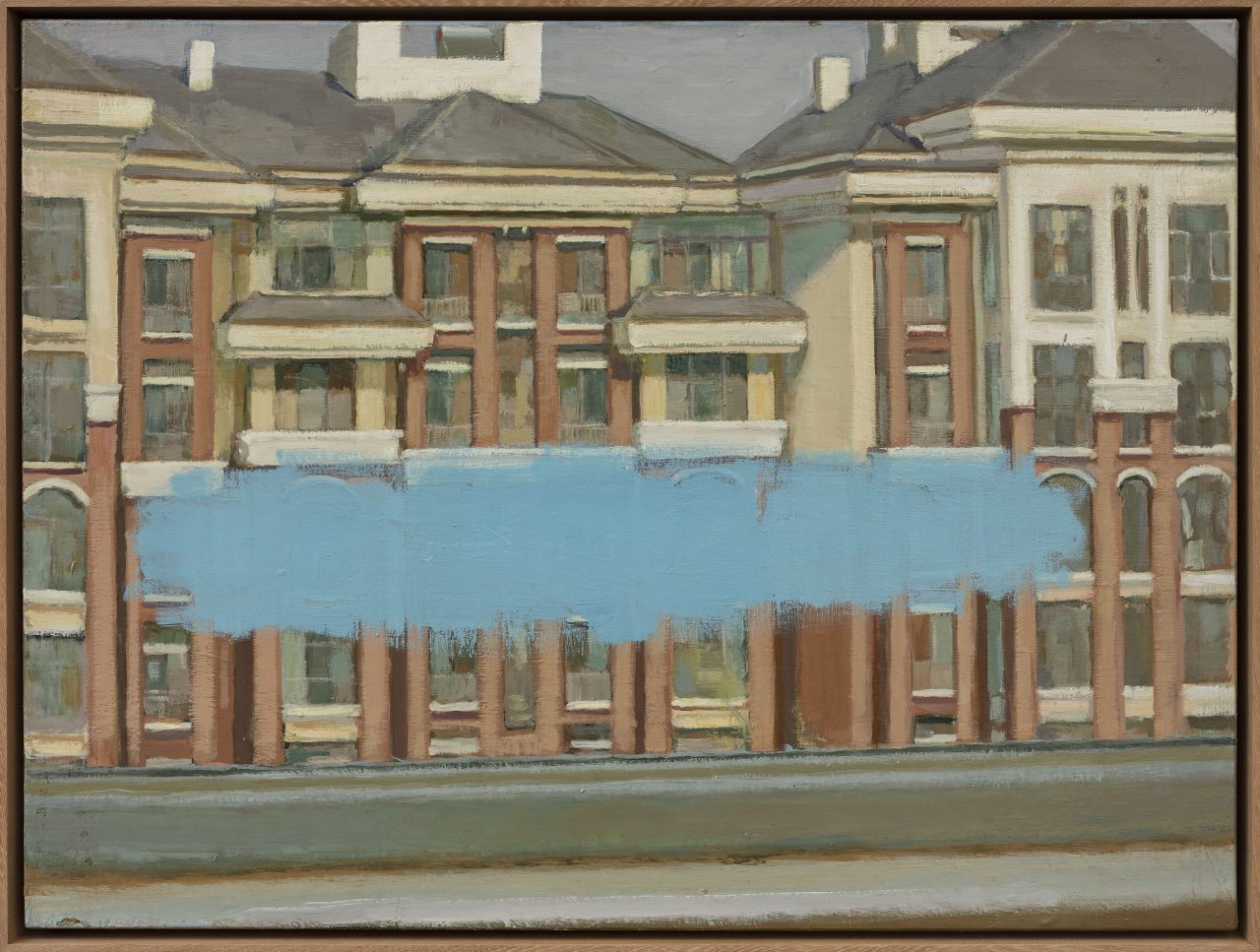Chinese Eastern Railway:Zhang Hui
As part of the second phase of "Chinese Eastern Railway", "Chinese Eastern Railway: Zhang Hui" will be presented in Long March Space on December 19.
Zhang Hui was born in a railway worker's family in Qiqihar and studied painting in Harbin as a teenager. For him, the "Chinese Eastern Railway" is a typical case of human beings building and generating material and civilization on the land. Zhang Hui believes that on the northeast continent where there was no trace of modernity, this kind of "building and generation" is based on a "drawing" covering this land-with the construction process of modern Northeast, the upper layer of the "drawing" The construction of various objects and the survival of people over the past hundreds of years have been superimposed on layers to form the reality of the Northeast we see today. The occasional part or corner of this drawing provides a conceptual basis for the latest development of Zhang Hui’s painting language. The 17 paintings exhibited in this exhibition are also based on the concept of the Northeast, developed by the artist’s painting logic and result in visual presentation.
The online viewing room will be launched from 19 December 18:00 to 31 December 18:00 (CST).
Introduction
The "Chinese Eastern Railway" is a rail line that links up the great expanse of China's northeast and crucial moments in modern Chinese history. The actual railway was the product of the Sino-Russian Secret Treaty signed by the Qing Empire and Tsarist Russia in 1896. Construction began in August 1897, and the railway went into service in July 1903. The rail line drew a giant "T" on the map, centered on Harbin, stretching west to Manchuria, south to Lüshun, and east to the Suifen River.
The "Chinese Eastern Railway" project was first proposed by artist Zhang Hui in 2018, and launched by Zhang Hui and Zhao Gang in 2019. In this project, the two artists look back on their hometowns—Zhang Hui was born in Qiqihar and raised in Harbin, while Zhao Gang is a global nomad with Manchurian roots who currently lives in Beijing—as well as the shifting landscape of modern Chinese society, politics, ideology, and aesthetic expression through painting.

The map of Chinese Eastern Railway
As Zhang Hui mentioned in the interview, he can feel that the Northeast is a 1:1 blueprint that has been redrawn three times. It was portrayed by the Soviets, by the Japanese, by our imagination of Manchuria at that time, and even by the people south of Shandong. The blueprints in this are overlapping, sometimes interactive. In this historical process, they keep overlapping, evolving into a space that has been altered countless times without a sense of space in time. This sense of empty space is a motivation for Zhang Hui to start his own creation. He seems to want to find out what combines these. When this series of these questions were circling in the artist's mind, it constituted Zhang Hui's basic text on the Chinese Eastern Railway and formed a script of his own on which to generate an image. The three flight attendants, the singing chef, and a few people who are setting up the tent are the products of the typical Zhang Hui-style image construction methodology.
Like the other recurring and changing images in Zhang Hui’s paintings, they grew out of Zhang Hui’s image-universe, making the totality of the image world constituted by Zhang Hui’s past, present, and future paintings, and became a garden of crossing paths, a "hypertext" (here, "text" is both an image and a canvas). And those elements in each painting that cross their respective canvases, frames or image stories, such as a ball that wants to break through the screen, a back figure that wants to enter the screen, or image hints of a specific theme (such as the road fangs that look like railroad tracks in the chef portraits) are like hyperlinks in this text, forming a rich path between all Zhang Hui's paintings.
The work in Mudanjiang provides a collective figure of modern Chinese crowd in front of Mudanjiang Station, but Zhang Hui has painted them as lonely back figures, almost locked in a disjointed background, in a cage form.
Thus, Zhang Hui’s practice is not only aimed at liberating painting from its existing conceptual bounds or from the old insights of predecessors, but more importantly, at reaching a new cognitive world. In other words, painting is itself a world. This appears to be a new reality, as well as a reality that can touch on, uncover or reveal the subject's intellect and reality itself. The logic of things, or the “thingliness of painting” forms the starting point and logic of Zhang Hui’s practice. From this point on, the painting is no longer a reflection or representation of the artist’s concepts. He has yielded the subjectivity of painting for painting itself. He often choses everyday scenes or everyday things as the basis for depiction or the foundation of the image, but in his logic, these images do not carry any meaning; they are merely ordinary things. On this foundation, his depictions have already utterly departed from the base image. He has deleted many details of the image, and by highlighting such linguistic elements as brushstrokes and colors, has diminished the image’s original narrative—of course, brushstrokes, colors and composition are themselves layers of the “thingliness of painting.”
——Lu Mingjun,“Theater of Painting: the Blueprints of Zhang Hui"
From start to finish, theatre is the center of Zhang Hui’s artistic practice. This theatre is constructed through the use of a hyper-realistic everyday life.
-- Qiu Zhijie, "Returning Debt - Time and Bricks of Zhang Hui"
The complexity of history, the individual and the environment, concealment, layering, stacking, repairing and falling off, color and the painterly narrative driven by the residual expression of color... Many things can be discussed in "Chinese Eastern Railway: Zhang Hui", And these must not be explained so quickly, because, as mentioned in the previous article: Zhang Hui's art is after all a hypertextual world constituted by the totality of his past, present and future paintings.
For Zhang Hui, the "Chinese Eastern Railway" is not only an opportunity to look back at this stage of life and creation, but also the development, reflection and rebirth of his consistent creative methods, painting language, thinking and experimentation on image logic. As a project, the "Chinese Eastern Railway" presents not a special case, but an internal drive that Zhang Hui deduced and forced from specific special cases, and finally returned to normal. From this perspective, the "Chinese Eastern Railway" not only exists in Zhang Hui's life, but also in his painting practice.
“If a person gazes at a painting, as if gazing at nature.”
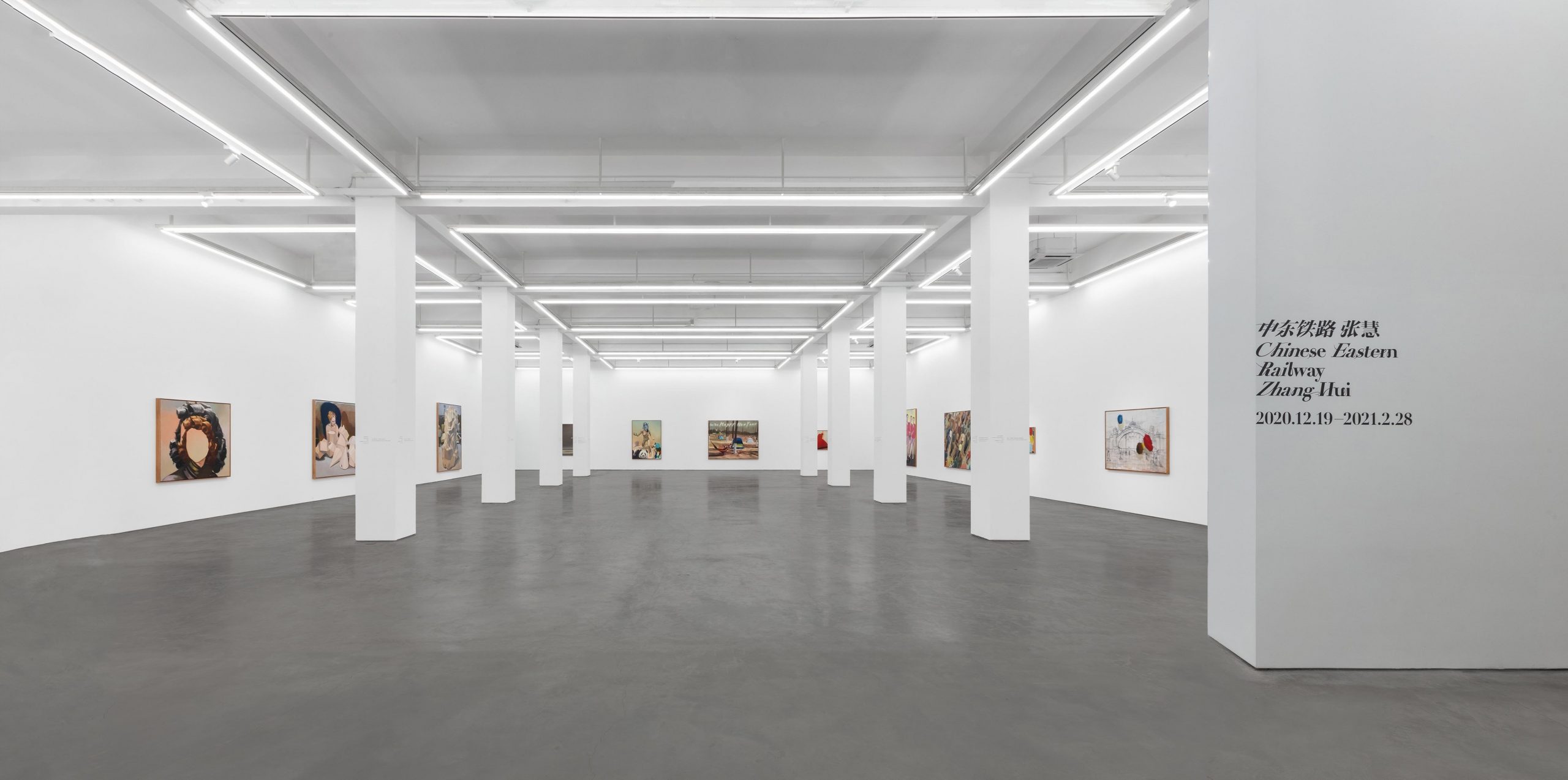
Exhibition photo
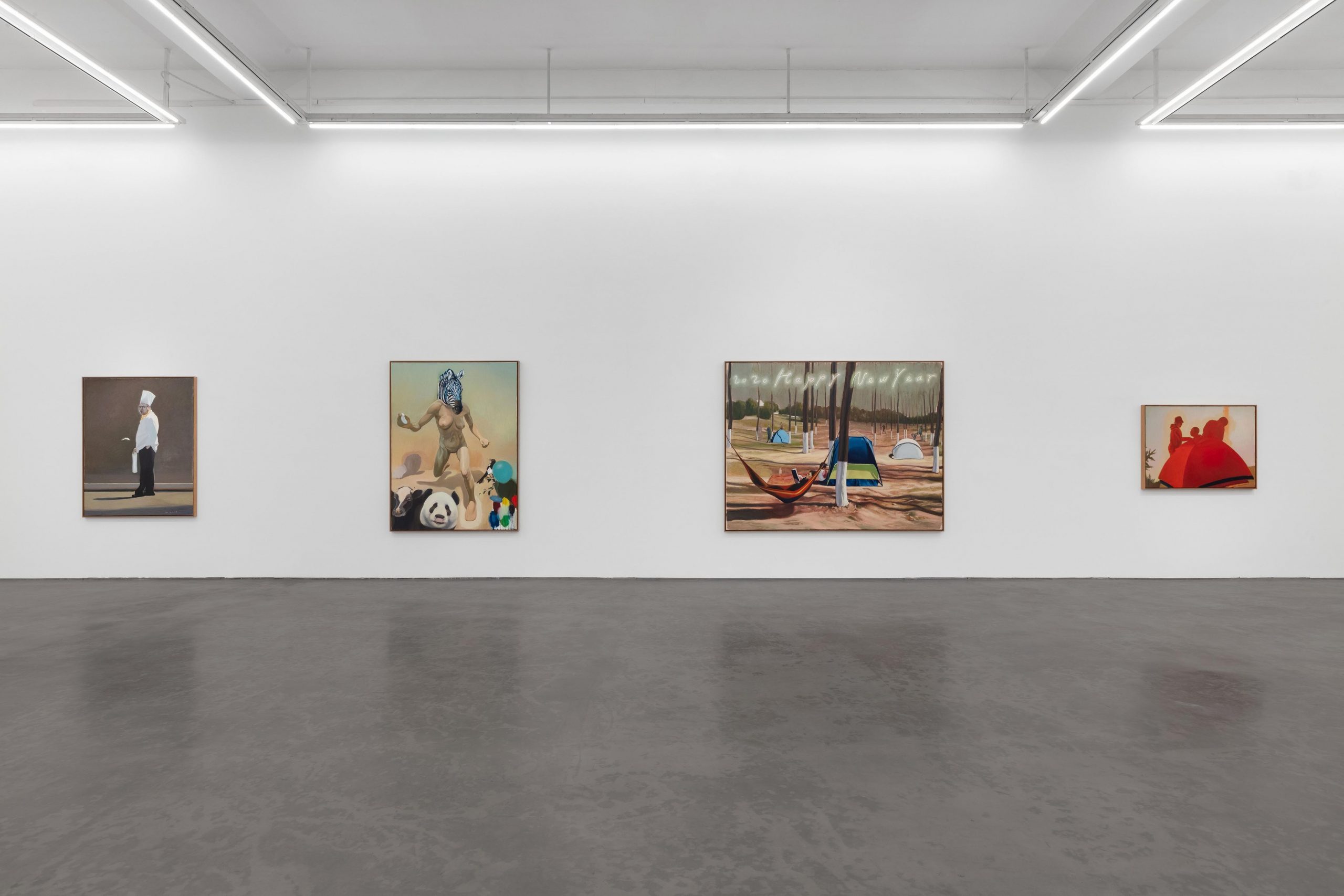
Exhibition photo
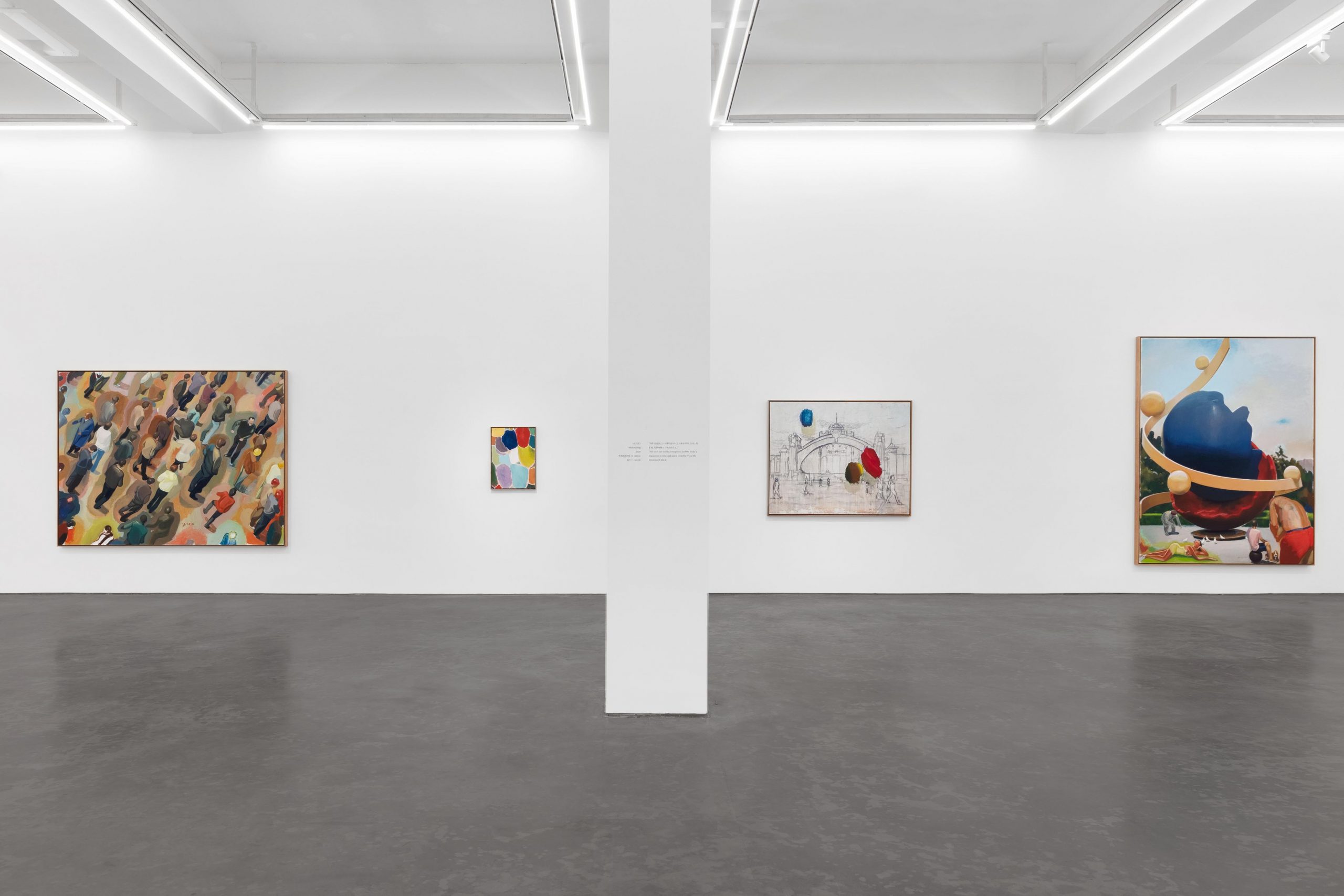
Exhibition photo
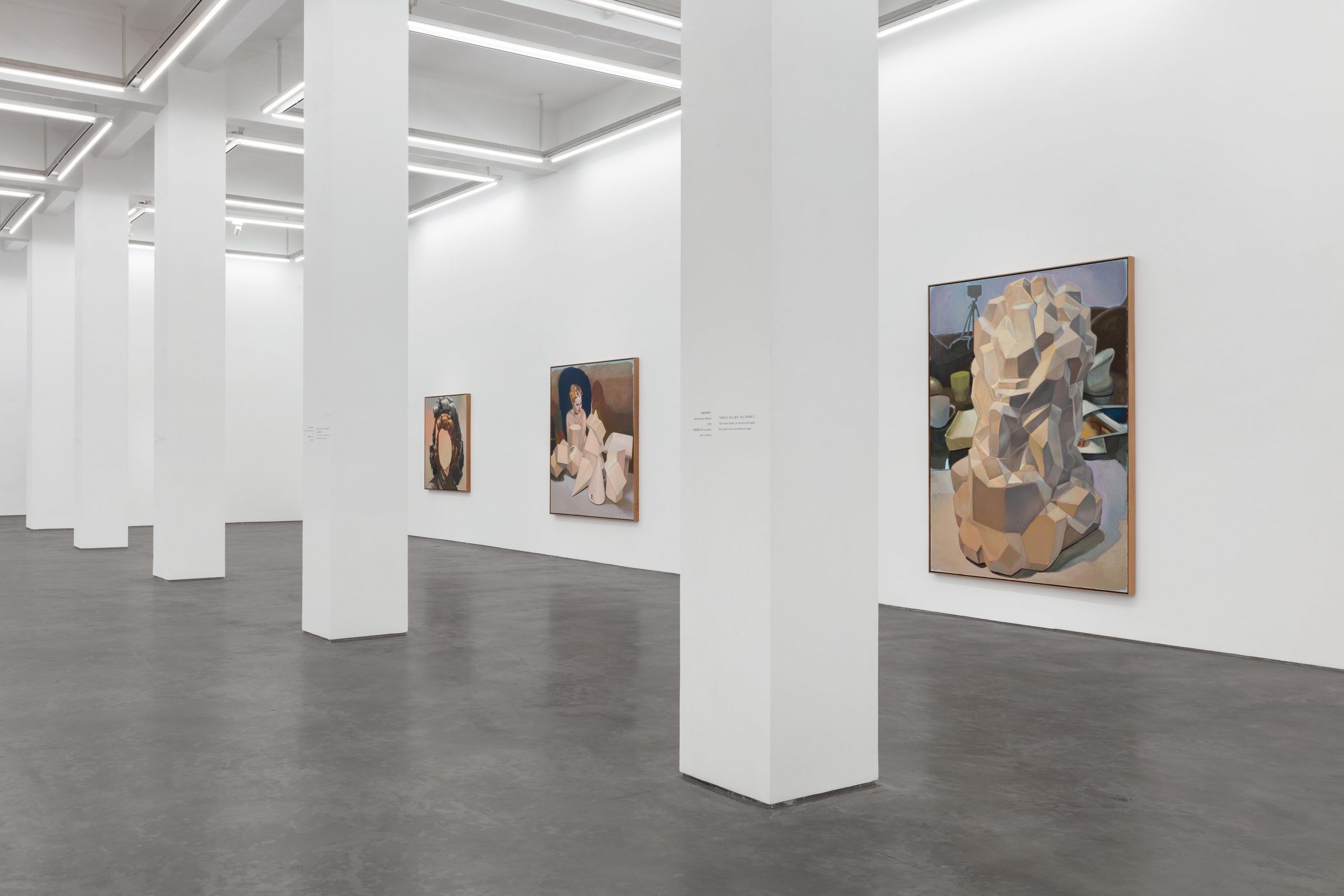
Exhibition photo
Zhang Hui, born in Heilongjiang Province in 1967, graduated from the Central Academy of Drama in 1991, currently lives and works in Beijing, and teaches in the Stage Art Department of the Central Academy of Drama. In the early explorations, Zhang Hui developed artistic creations focusing on performance and installation, and then also explored and practiced in the fields of multimedia and live theater; he was an important participant in the "post-sensibility" series of exhibitions in the late 1990s. In 2004, the Odd Phenomena Group was formed.
Beginning with the solo exhibition of “Partial Zones” held in Long March Space in 2006, Zhang Hui turned to the exploration of painting language and image logic-examining the fuzzy zone between reality and subconscious, normal and abnormal, while reflecting on people’s authentic and unique understanding of reality and striving to expand the structure behind real events and their images. The research objects of his works range from the habits rooted in daily life to the exploration of other dimensions-these have become the two main components of the artist's works that can evoke dramatic resonance. The recurring and changing images in Zhang Hui's paintings connect sustainability with its relationship with time and space in a hyperlinked manner. In Zhang Hui's view, visual experience is not only the experience of fine arts, but the experience "trained" by vision. It often gives people thinking and hints, and then influences people's viewing of the world.
Recent solo exhibitions include "Zhang Hui 2018" (Long March Space, Beijing, 2018); "Zhang Hui" (Long March Space, Beijing, 2016); "Square" (Long March Space, Beijing, 2014). Important group exhibitions include "Duration Chinese Art in Transformation" (Beijing Minsheng Art Museum, Beijing, 2020); "Meditation in an Emergency" (UCCA Center for Contemporary Art, Beijing, 2020); "Assembling" (chi K11, Shenyang, 2018); “Post-sense Sensibility: Trepidation and Will” (Beijing Minsheng Art Museum, Beijing, 2016); “Stereognosis” (Redtory Museum of Contemporary Art, Guangzhou, 2015); “The 11th Sharjah Biennale: Re:emerge-Towards a New Cultural Cartography" (Sharjah, 2013); "The 8th Shanghai Biennale- Rehearsal" (Shanghai Art Museum, Shanghai, 2010); "The 3rd Guangzhou Triennial: Farewell to Post Colonialism" (Guangdong Museum of Art, Guangzhou, 2008).
Chinese Eastern Railway:Zhang Hui
As part of the second phase of "Chinese Eastern Railway", "Chinese Eastern Railway: Zhang Hui" will be presented in Long March Space on December 19.
Zhang Hui was born in a railway worker's family in Qiqihar and studied painting in Harbin as a teenager. For him, the "Chinese Eastern Railway" is a typical case of human beings building and generating material and civilization on the land. Zhang Hui believes that on the northeast continent where there was no trace of modernity, this kind of "building and generation" is based on a "drawing" covering this land-with the construction process of modern Northeast, the upper layer of the "drawing" The construction of various objects and the survival of people over the past hundreds of years have been superimposed on layers to form the reality of the Northeast we see today. The occasional part or corner of this drawing provides a conceptual basis for the latest development of Zhang Hui’s painting language. The 17 paintings exhibited in this exhibition are also based on the concept of the Northeast, developed by the artist’s painting logic and result in visual presentation.
The online viewing room will be launched from 19 December 18:00 to 31 December 18:00 (CST).
Introduction
The "Chinese Eastern Railway" is a rail line that links up the great expanse of China's northeast and crucial moments in modern Chinese history. The actual railway was the product of the Sino-Russian Secret Treaty signed by the Qing Empire and Tsarist Russia in 1896. Construction began in August 1897, and the railway went into service in July 1903. The rail line drew a giant "T" on the map, centered on Harbin, stretching west to Manchuria, south to Lüshun, and east to the Suifen River.
The "Chinese Eastern Railway" project was first proposed by artist Zhang Hui in 2018, and launched by Zhang Hui and Zhao Gang in 2019. In this project, the two artists look back on their hometowns—Zhang Hui was born in Qiqihar and raised in Harbin, while Zhao Gang is a global nomad with Manchurian roots who currently lives in Beijing—as well as the shifting landscape of modern Chinese society, politics, ideology, and aesthetic expression through painting.

The map of Chinese Eastern Railway
The project is divided into two phases. The first phase is called "the walking". The two artists set off on July 15, 2019. Zhao Gang rode a motorcycle from Beijing to Manchuria and headed east, while Zhang Hui took a train from Lushun, Dalian Lushun to the west. The two sides met in Harbin 9 days later and started a series of discussions during the walking with a group of researchers and curators on the Northeast issues. Interviewers include the curator Lu Mingjun, the founder of the Long March Project Lu Jie, the professor of Harbin Normal University Wang Hui, etc., as well as the observer and commentator of the "Chinese Eastern Railway: the Walking" Long March Project. The second stage was accompanied by the development of the two artists' respective creations during and after the walk. Long March Space will present the two exhibitions "Chinese Eastern Railway: Zhao Gang" (October-December 2020) and "Chinese Eastern Railway : Zhang Hui” (December 2020-February 2021) and related seminars.
As a specific railway line, the Chinese Eastern Railway is also the boundary of multiple cultures and powers. It is the front line for the encounter and flow of various forces within modern and contemporary, the West and the East, and within the Northeast Asia. Art education from modern Europe and the former Soviet Union brought a modern way of understanding the body, and has since influenced people's view of the outside world; public sculptures and propaganda posters in China in the 1980s have been used for generations. A specific monumental visual structure has been formed in his aesthetic experience and collective subconsciousness... All of this is embodied in the most exciting new images in this series of new works by Zhang Hui.
As Zhang Hui mentioned in the interview, he can feel that the Northeast is a 1:1 blueprint that has been redrawn three times. It was portrayed by the Soviets, by the Japanese, by our imagination of Manchuria at that time, and even by the people south of Shandong. The blueprints in this are overlapping, sometimes interactive. In this historical process, they keep overlapping, evolving into a space that has been altered countless times without a sense of space in time. This sense of empty space is a motivation for Zhang Hui to start his own creation. He seems to want to find out what combines these. When this series of these questions were circling in the artist's mind, it constituted Zhang Hui's basic text on the Chinese Eastern Railway and formed a script of his own on which to generate an image. The three flight attendants, the singing chef, and a few people who are setting up the tent are the products of the typical Zhang Hui-style image construction methodology.
Like the other recurring and changing images in Zhang Hui’s paintings, they grew out of Zhang Hui’s image-universe, making the totality of the image world constituted by Zhang Hui’s past, present, and future paintings, and became a garden of crossing paths, a "hypertext" (here, "text" is both an image and a canvas). And those elements in each painting that cross their respective canvases, frames or image stories, such as a ball that wants to break through the screen, a back figure that wants to enter the screen, or image hints of a specific theme (such as the road fangs that look like railroad tracks in the chef portraits) are like hyperlinks in this text, forming a rich path between all Zhang Hui's paintings.
The work in Mudanjiang provides a collective figure of modern Chinese crowd in front of Mudanjiang Station, but Zhang Hui has painted them as lonely back figures, almost locked in a disjointed background, in a cage form.
Li Xianglan (Shirley Yamaguchi) was a legend who linked the history of the Northeast China in the first half of the 20th century. She wore the loose robe of a Manchu woman, the hairstyle of a Hollywood star, and the East Asian faces with western eyebrows. In the macro-historical process that cannot be divided by any individual, her name, like her face, sometimes becomes the object of modern desire projection, and sometimes becomes a historically-correct black hole, and finally becomes a symbol, a kaleidoscope shape historical device.
Thus, Zhang Hui’s practice is not only aimed at liberating painting from its existing conceptual bounds or from the old insights of predecessors, but more importantly, at reaching a new cognitive world. In other words, painting is itself a world. This appears to be a new reality, as well as a reality that can touch on, uncover or reveal the subject's intellect and reality itself. The logic of things, or the “thingliness of painting” forms the starting point and logic of Zhang Hui’s practice. From this point on, the painting is no longer a reflection or representation of the artist’s concepts. He has yielded the subjectivity of painting for painting itself. He often choses everyday scenes or everyday things as the basis for depiction or the foundation of the image, but in his logic, these images do not carry any meaning; they are merely ordinary things. On this foundation, his depictions have already utterly departed from the base image. He has deleted many details of the image, and by highlighting such linguistic elements as brushstrokes and colors, has diminished the image’s original narrative—of course, brushstrokes, colors and composition are themselves layers of the “thingliness of painting.”
———Lu Mingjun,《绘画剧场:张慧的“蓝图” 》
From start to finish, theatre is the center of Zhang Hui’s artistic practice. This theatre is constructed through the use of a hyper-realistic everyday life.
-- Qiu Zhijie, "Returning Debt - Time and Bricks of Zhang Hui"
The complexity of history, the individual and the environment, concealment, layering, stacking, repairing and falling off, color and the painterly narrative driven by the residual expression of color... Many things can be discussed in "Chinese Eastern Railway: Zhang Hui", And these must not be explained so quickly, because, as mentioned in the previous article: Zhang Hui's art is after all a hypertextual world constituted by the totality of his past, present and future paintings.
For Zhang Hui, the "Chinese Eastern Railway" is not only an opportunity to look back at this stage of life and creation, but also the development, reflection and rebirth of his consistent creative methods, painting language, thinking and experimentation on image logic. As a project, the "Chinese Eastern Railway" presents not a special case, but an internal drive that Zhang Hui deduced and forced from specific special cases, and finally returned to normal. From this perspective, the "Chinese Eastern Railway" not only exists in Zhang Hui's life, but also in his painting practice.
“If a person gazes at a painting, as if gazing at nature.”

Exhibition photo

Exhibition photo

Exhibition photo

Exhibition photo
Zhang Hui, born in Heilongjiang Province in 1967, graduated from the Central Academy of Drama in 1991, currently lives and works in Beijing, and teaches in the Stage Art Department of the Central Academy of Drama. In the early explorations, Zhang Hui developed artistic creations focusing on performance and installation, and then also explored and practiced in the fields of multimedia and live theater; he was an important participant in the "post-sensibility" series of exhibitions in the late 1990s. In 2004, the Odd Phenomena Group was formed.
Beginning with the solo exhibition of “Partial Zones” held in Long March Space in 2006, Zhang Hui turned to the exploration of painting language and image logic-examining the fuzzy zone between reality and subconscious, normal and abnormal, while reflecting on people’s authentic and unique understanding of reality and striving to expand the structure behind real events and their images. The research objects of his works range from the habits rooted in daily life to the exploration of other dimensions-these have become the two main components of the artist's works that can evoke dramatic resonance. The recurring and changing images in Zhang Hui's paintings connect sustainability with its relationship with time and space in a hyperlinked manner. In Zhang Hui's view, visual experience is not only the experience of fine arts, but the experience "trained" by vision. It often gives people thinking and hints, and then influences people's viewing of the world.
Recent solo exhibitions include "Zhang Hui 2018" (Long March Space, Beijing, 2018); "Zhang Hui" (Long March Space, Beijing, 2016); "Square" (Long March Space, Beijing, 2014). Important group exhibitions include "Duration Chinese Art in Transformation" (Beijing Minsheng Art Museum, Beijing, 2020); "Meditation in an Emergency" (UCCA Center for Contemporary Art, Beijing, 2020); "Assembling" (chi K11, Shenyang, 2018); “Post-sense Sensibility: Trepidation and Will” (Beijing Minsheng Art Museum, Beijing, 2016); “Stereognosis” (Redtory Museum of Contemporary Art, Guangzhou, 2015); “The 11th Sharjah Biennale: Re:emerge-Towards a New Cultural Cartography" (Sharjah, 2013); "The 8th Shanghai Biennale- Rehearsal" (Shanghai Art Museum, Shanghai, 2010); "The 3rd Guangzhou Triennial: Farewell to Post Colonialism" (Guangdong Museum of Art, Guangzhou, 2008).

